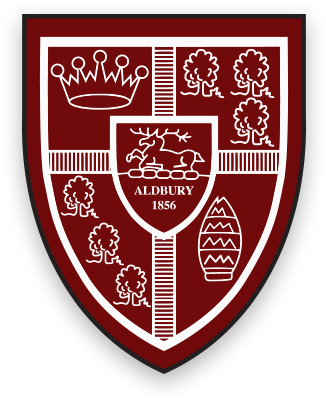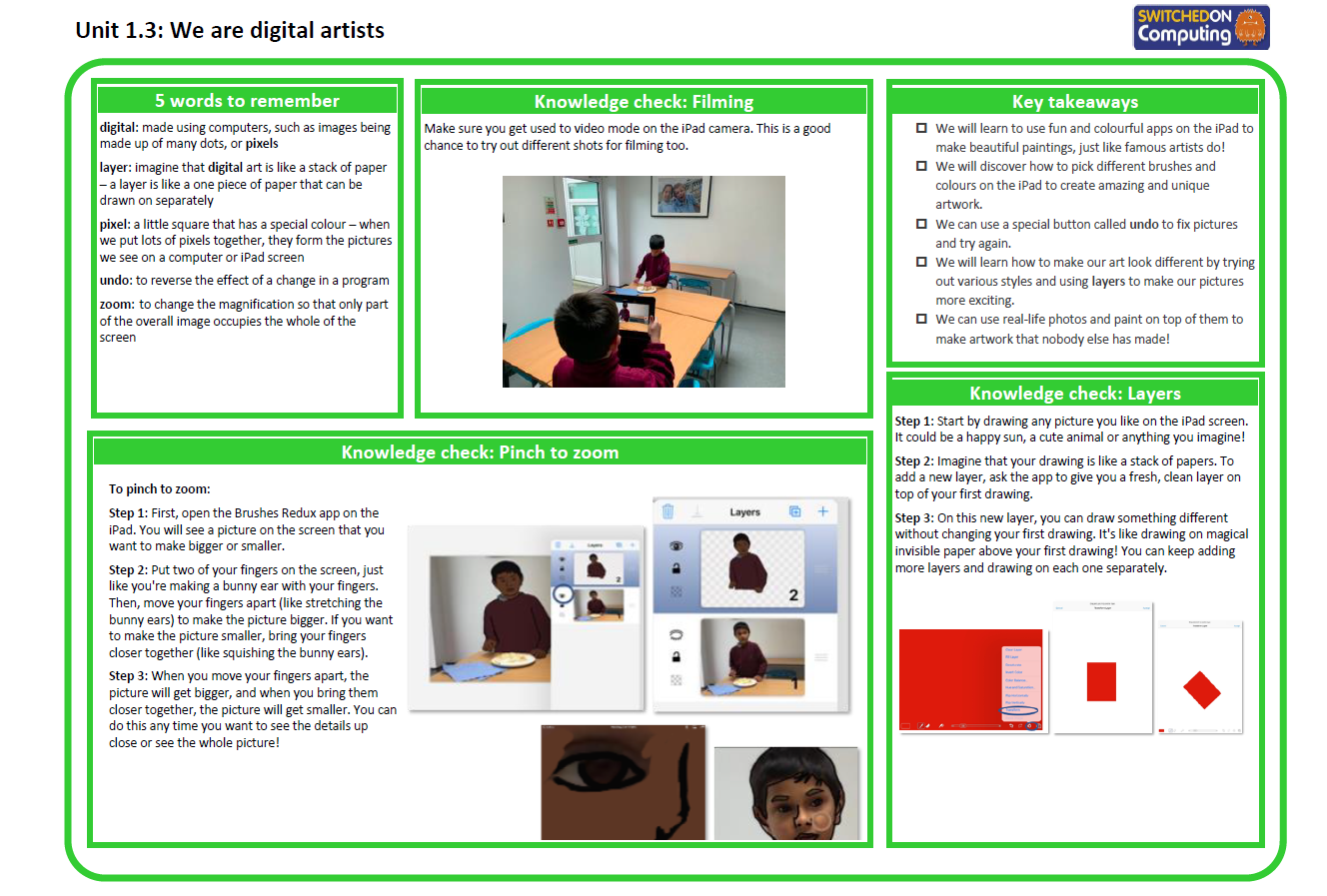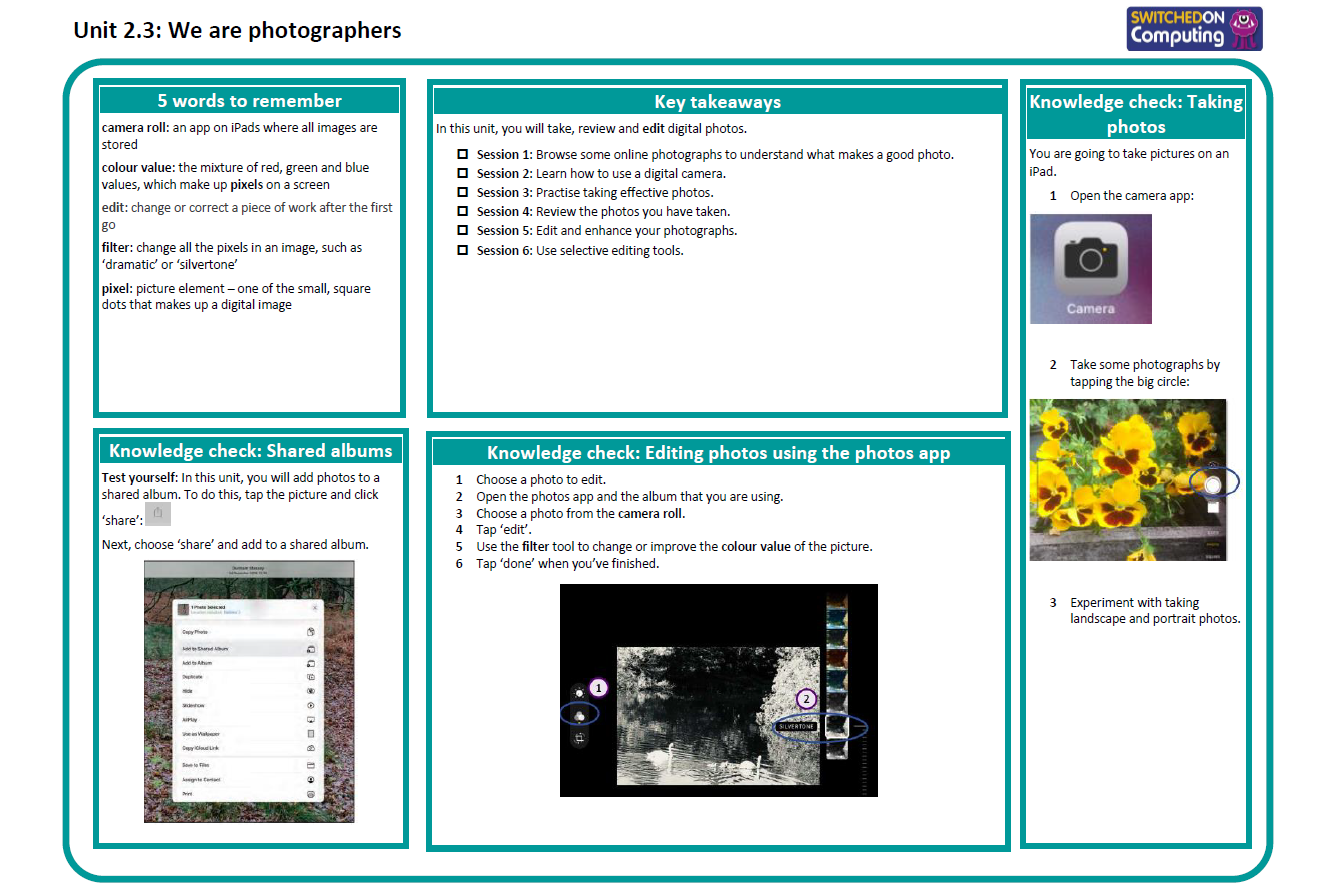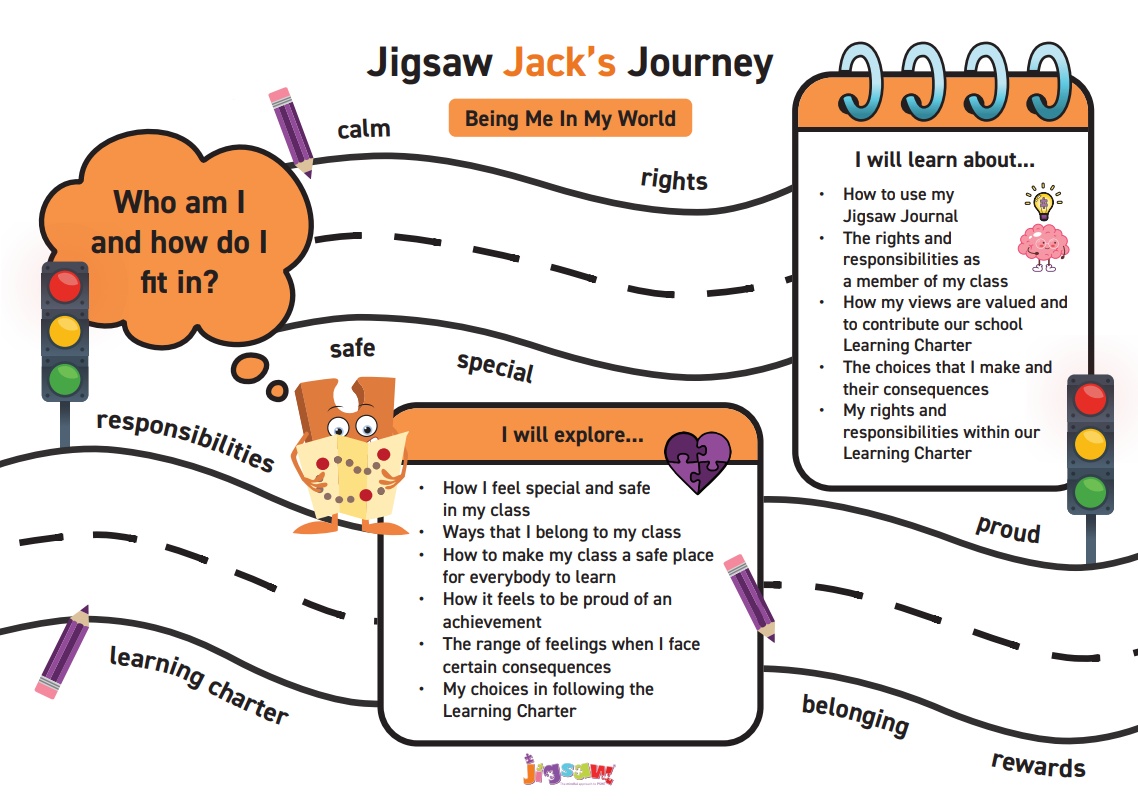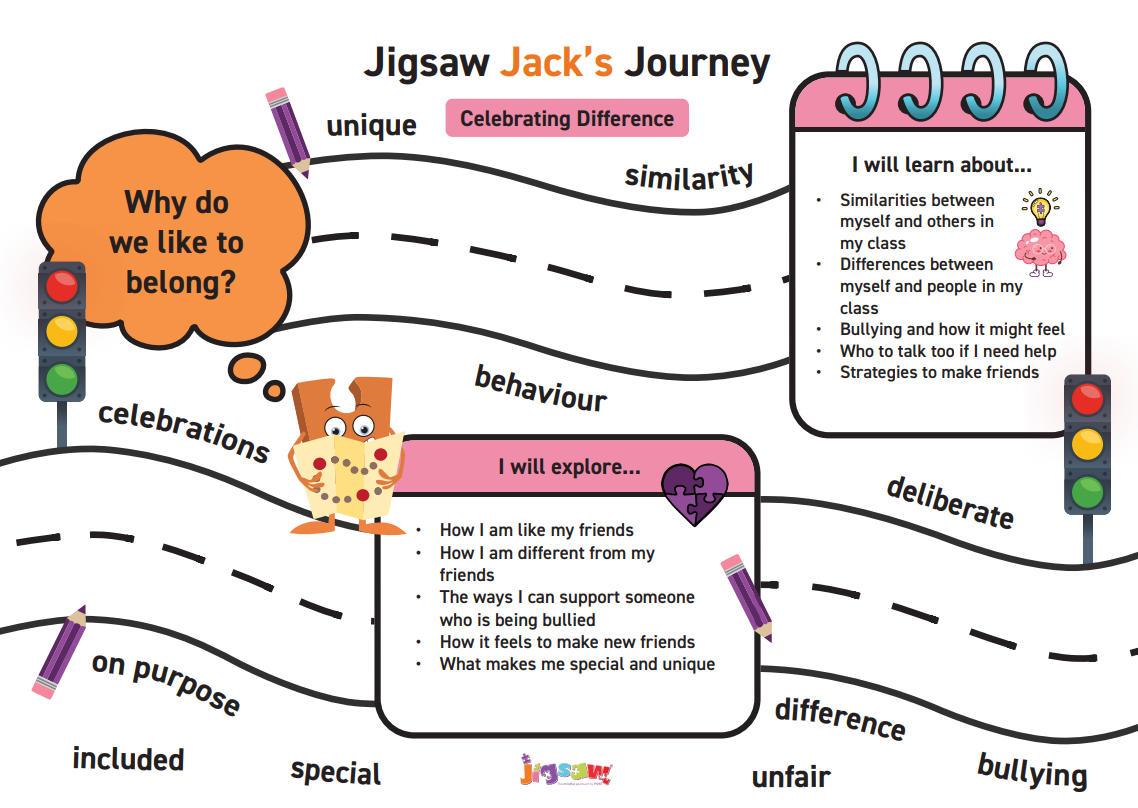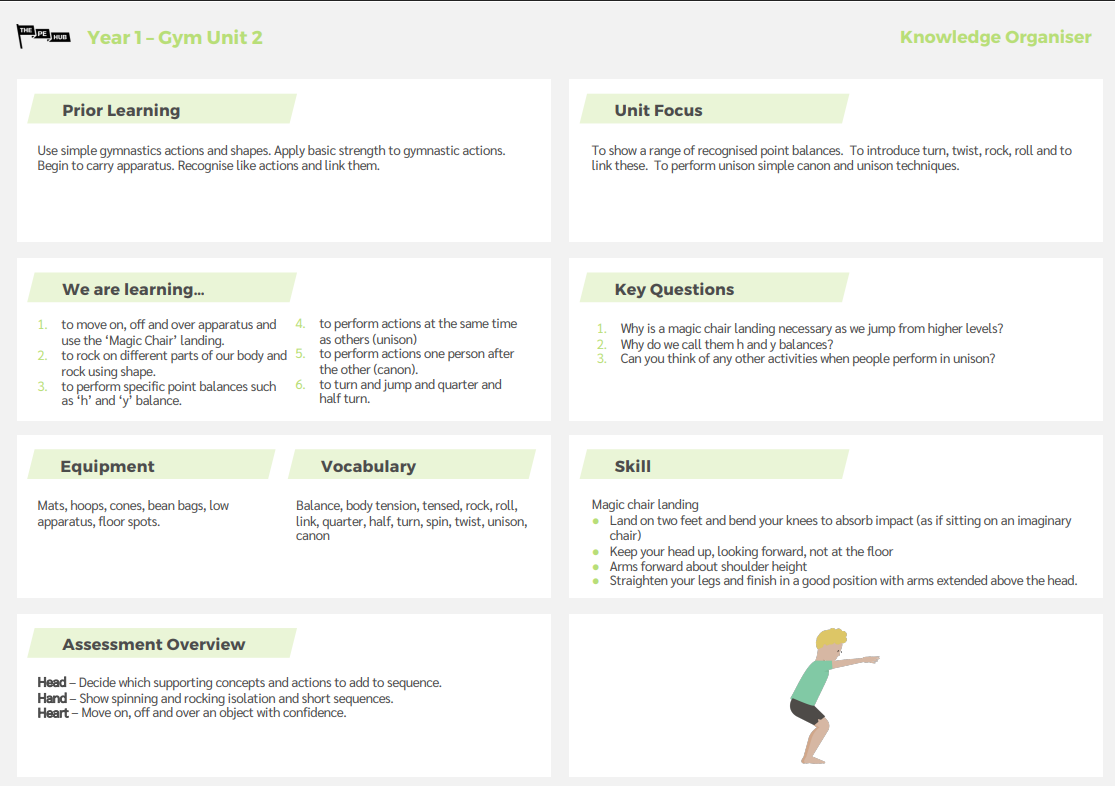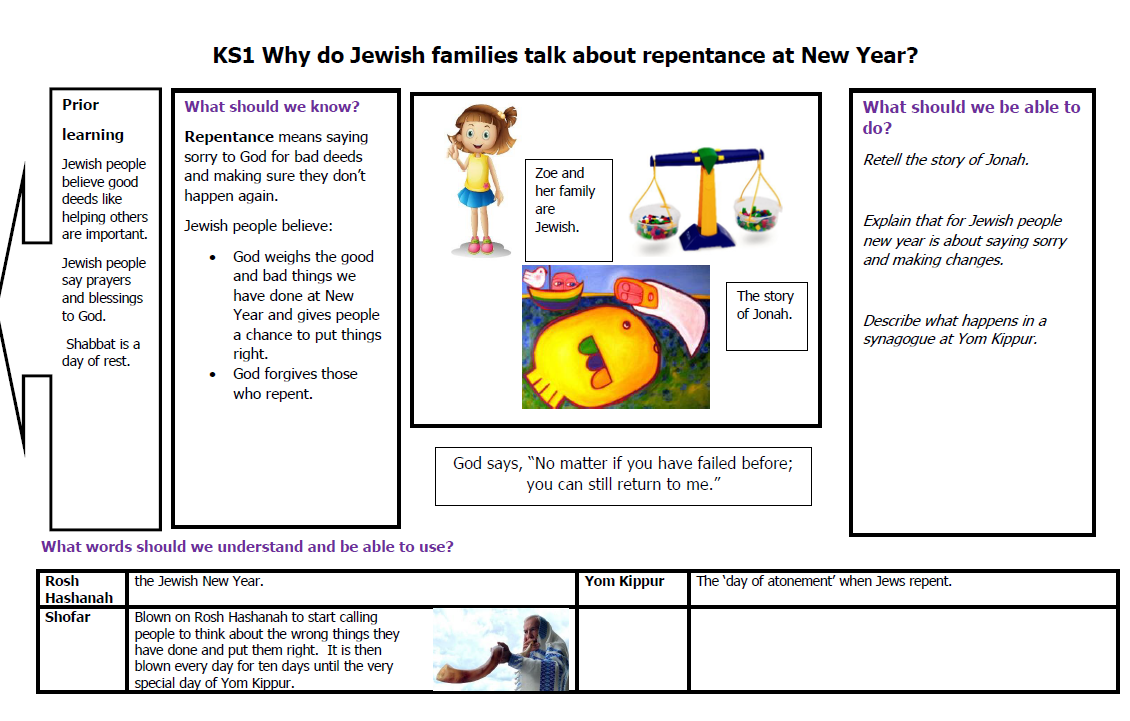Autumn Term 2025
English - Writing
Before half term, Class 2 will begin with Billy and the Beast, creating their own Billy character to overcome challenges and defeat a terrible beast. Through summaries, emails, recipes and story writing, children will explore bravery, problem-solving and friendship while developing their confidence as storytellers.
Next, the class will enjoy Emily Gravett’s Wolves, using drama and roleplay to explore fact and fiction. Children will meet a fairytale character, research wolves and produce informative leaflets to help the townsfolk. This unit links strongly to science, with children learning about habitats, food chains and the differences between real animals and those found in stories.
After half term, children will move on to Lubna and Pebble, a moving story of friendship and kindness. With their own special pebbles, they will write thank you letters, descriptions and advice, before gifting them with care instructions to someone important. The unit nurtures empathy, generosity and selfless acts of friendship while building writing skills.
Finally, Class 2 will study Jim and the Beanstalk, a playful sequel to a much-loved fairytale. Children will discover a beanstalk in class, retell and innovate the story, before writing their own sequels to traditional tales. This unit encourages creativity, deepens understanding of story structure and explores themes of helping others and reimagining familiar tales.
Computing
We start the school year with the until: 'We are digital artists', children will create artwork inspired by great artists. They will learn to select brushes and colours, use undo functions for experimentation, and work with multiple layers. Children will use software like Brushes Redux and Autodesk SketchBook to paint on iPads. Activities include creating work based on artists like Rothko, Kandinsky, Picasso, Matisse, Julian Opie, and Mondrian.
After half term our unit is 'We are photographers', children will learn to consider the technical and artistic merits of photographs. They will use the iPad camera app, Photos app, and Snapseed to take, select, and edit digital images, including enhancing them with various adjustments. Children will also explore online safety, understanding the importance of privacy, copyright, and responsible sharing of images, as once images are online, control is difficult.
Maths
In Class 2 this term, children in Years 1 and 2 will be developing their mathematical understanding through the White Rose Maths scheme, which carefully builds knowledge step by step.
The term begins with place value, helping children to understand the importance of digits and their position in numbers. Year 1 pupils will focus on numbers within 20, recognising how numbers are made up of tens and ones, and becoming confident with ordering and comparing them. Year 2 pupils will extend this learning to numbers within 100, deepening their understanding of partitioning, patterns, and sequences.
Following this, we move into addition and subtraction within 20. Year 1 children will learn to use practical equipment and number facts to solve problems, while Year 2 pupils will consolidate key strategies, including number bonds and using known facts to solve calculations more efficiently. Both groups will be encouraged to explain their thinking and use mathematical language to support reasoning.
Later in the term, we will revisit place value within 100 to strengthen fluency and understanding, particularly for Year 2, while Year 1 children consolidate their earlier learning.
We finish the term by exploring shape. Year 1 children will identify and describe 2D and 3D shapes, while Year 2 pupils will build on this by recognising properties such as edges, vertices, and faces, and beginning to explore symmetry.
Throughout, children will be encouraged to use practical resources, problem-solving activities, and discussion to make their learning meaningful and enjoyable.
Music
Based around five of the movements from Carnival of the animals, pupils will start the new year by exploring ways that the composer – Camille Saint-Saëns – has used instruments, rhythm, articulation, tempo, and pitch to create pictures of the animals in our imaginations.
Most children will be able to:
- Select instruments and compose music to reflect an animal’s character.
- Listen with increased concentration to sounds/music and respond by: talking about them using music vocabulary, or physically with movement and dance.
- Identify different qualities of sound (timbre) e.g. smooth, scratchy, clicking, ringing, and how they are made.
- Recognise and respond to changes of speed (tempo), the length of notes (duration – long/short), short/detached/smooth (articulation), and pitch (high/low) using music vocabulary, and/or movement.
After half term, the music learning is full of conversations between instruments (and/or voices). Ideas are often passed back and forth, copied, and developed. This unit describes how to create musical conversations with your children. Pupils will invent and compose short pieces based around question-and-answer interactions/dialogue. They will also learn to take turns playing, lead and follow, read a ‘score’, and create their own simple graphic scores.
Most children will be able to:
- Improvise question-and-answer conversations using percussion instruments.
- Compose musical sound effects and short sequences of sounds in response to a stimulus.
- Recognise how graphic symbols can represent sound.
- Create, interpret, and perform simple graphic scores.
Phonics
In the Autumn term, children in Year 1 will continue to build on their phonics knowledge to become more confident readers and writers. In the first half of the term, they will review sounds (called graphemes) from earlier learning, including ai, ee, igh, oa, oo, ar, or, ur, ow, oi, ear, and practise reading and writing longer words. They will also begin learning new Phase 5 sounds such as ay, ou, oy, ea.
After half term, children will focus on more Phase 5 sounds, including different ways to spell the same sound (e.g. igh as in pie, time, i, ie). They will also learn new tricky words like their, people, oh, your, could, would, should, and more. These are words that can’t always be sounded out easily and need to be recognised by sight.
This term’s phonics learning helps children become more fluent readers and more confident in spelling and writing.
Supporting your child with reading
Although your child will be taught to read at school, you can have a huge impact on their reading journey by continuing their practice at home.
There are two types of reading book that your child may bring home:
A reading practice book. This will be at the correct phonic stage for your child. They should be able to read this fluently and independently.
A sharing book. Your child will not be able to read this on their own. This book is for you both to read and enjoy together.
Reading practice book
This book has been carefully matched to your child’s current reading level. If your child is reading it with little help, please don’t worry that it’s too easy – your child needs to develop fluency and confidence in reading.
Listen to them read the book. Remember to give them lots of praise – celebrate their success! If they can’t read a word, read it to them. After they have finished, talk about the book together.
Sharing book
In order to encourage your child to become a lifelong reader, it is important that they learn to read for pleasure. The sharing book is a book they have chosen for you to enjoy together.
Please remember that you shouldn’t expect your child to read this alone. Read it to or with them. Discuss the pictures, enjoy the story, predict what might happen next, use different voices for the characters, explore the facts in a non-fiction book. The main thing is that you have fun!
PSHE - Personal, Social and Health Education
Before half term, Class 2 will be learning about how to create a happy and safe classroom where everyone feels valued. They will explore the importance of kindness, responsibility, and the role of adults in keeping them safe. Children will learn about the Learning Charter and how shared rules help everyone learn and play together respectfully. Through stories and discussion, they will reflect on how their actions affect others and how being kind helps build a welcoming environment. This unit encourages children to take pride in their class community and understand how they contribute to making it a positive place.
After half term, Class 2 will be learning about how everyone is unique and special. They will explore how people can be different in appearance, families, and interests, and how these differences make our class community stronger. Children will learn to recognise bullying, including physical and emotional behaviours, and understand how it can make others feel scared or upset. Through stories, discussion, and role-play, they will practise ways to show kindness and support, even when someone is feeling left out. The unit encourages empathy, fairness, and the importance of standing up for others in a respectful and caring way.
PE - Physical Education
For the first half term, Class 2 have specialist Dance lessons led by the Saracens Foundation. Alongside this, Year 2 pupils will enjoy weekly Forest School sessions, making the most of outdoor learning, while Year 1 pupils will take part in lessons led by Game On sports coaches, focusing on passing and receiving skills in team games.
After half term, the children will be building on their gymnastics skills. The children will explore moving on, off and over apparatus, practise safe “magic chair” landings, and learn to rock, roll and balance in different shapes, including the ‘h’ and ‘y’ balances. They will also begin to perform actions in unison and canon, developing coordination and teamwork.
They will be developing their hitting, throwing, and bowling skills using various bats and balls. They will learn to score points by running to targets and apply tactics to field and defend. The unit promotes teamwork, decision-making, and sportsmanship through engaging games that build coordination, accuracy, and understanding of roles in team play.
RE - Religious Education
Children will explore key themes in Judaism and Christianity. Before half term, they will learn about teshuvah, the Jewish concept of repentance, and why Jewish families reflect and seek forgiveness during New Year. They will explore how saying sorry and making changes is important in Jewish faith and practice.
After half term, children will focus on the Christian celebration of Christmas and the idea of incarnation—God becoming human in the form of Jesus. They will learn why Christmas matters to Christians and how the birth of Jesus is celebrated as a sign of hope, love, and new beginnings.
Science
Children will learn to identify, name, and group a variety of common animals, including mammals, birds, reptiles, amphibians, and fish. They will explore the differences between carnivores, herbivores, and omnivores, and compare animal features. The unit also covers the basic needs of animals and humans—air, water, and food—and the importance of exercise and hygiene for staying healthy. Children will learn about balanced diets and how to make healthy food choices. The unit includes learning about Florence Nightingale and her role in improving hygiene in hospitals, helping children understand the importance of cleanliness in preventing illness and infection.
